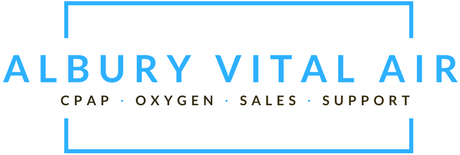Bi-Level CPAP Machines - BiPAP, VPAP, Bi-Level PAP Therapy
Bi-Level PAP therapy uses 2 levels of pressure to treat sleep apnea, an inspiratory pressure (IPAP) and an expiratory pressure (EPAP).
This simply means that a pressure delivered upon inhalation is higher than the pressure upon breathing out and is beneficial to person that has trouble exhaling against standard CPAP pressure.
The pressure settings are separated by a pressure support threshold of 3-6 cm/H2O (example: a person on 16cm IPAP and 12cm EPAP have a pressure support of 4cm, the difference between the 2).
Bi-Level is the proper name; however most people, physicians included refer to it by a manufacturer trade name of BiPAP, similar to how most people call cotton swabs Q-Tips. BiPAP is Bi-Level; it is also referred to as VPAP, another manufacturer trade name for the same type of therapy.
Sounds confusing right?

Bi-Level are less commonly prescribed sleep therapy devices, making up only about 15% of the sleep therapy market. Unless specifically prescribed due to other pre-existing conditions, Bi-Level therapy is typically used for one of these 2 reasons:
1.) A person with such severe apnea that requires a fixed CPAP pressure that is too high (i.e. 15cm/H2O). Many sleep labs have a protocol that states when a person gets to a certain pressure threshold to switch them over to Bi-Level.
2.) It’s meant to assist in compliance, a person who is non-compliant, meaning they do not use the CPAP machine, may benefit from a Bi-Level device that provides the comfort of exhaling against a lower pressure than the pressure they are breathing in.
Auto Bi-Level CPAP - Auto BiPAP, Auto Adjusting Bi-Level
Auto Bi-level devices use a combination of Bi-Level technology and Auto CPAP technology and instead of having one fixed IPAP pressure and one fixed EPAP pressure, these two pressure settings auto adjust based on therapy need.
So how does the device know when to increase the IPAP (inspiratory pressure) and when to increase the EPAP (expiratory pressure? The EPAP pressure (the lower number in your BiPAP/Bi-level setting) is the pressure used to eliminate obstructive apneas and stabilize the airway, meaning to keep it patent and open while the IPAP pressure is used to eliminate hypopnea, flow limitation and any residual snoring. A pressure support number is established to instruct the machine the differences in pressure between the IPAP and EPAP, this pressure setting is typically between 3cm/H2O and 6cm/H2O.
Much like Auto CPAP machines, the Auto Bi-Levels can operate in 2 modes which are the standard Bi-Level mode or Auto adjust mode. Many of the candidates for Auto Bi-Level have the same determining factors as the standard Bi-Level candidates listed in the above description for Bi-Level.
Bi-Level ST - BiPAP S/T, VPAP ST, Spontaneous Timed
Bi-Level ST devices operate with the same IPAP and EPAP concept of traditional Bi-Levels/BiPAPs however they carry the fancy ST acronym behind their name that means Spontaneous Timed.
The devices are non-invasive ventilators. So what does this mean?
Unlike traditional Bi-Level/BiPAP where the IPAP and EPAP (your breaths in and breaths out) are determined by the user (you), the ST mode has a timed eupneic rate that establishes when you are to breathe in and breathe out.
To put this in easier terms to understand, the standard Bi-Level reacts to your breathing where the Bi-Level ST when time you when to breathe in and breathe out.
So who are the target candidates for BiPAP ST and VPAP ST?
People that have COPD (chronic obstructive pulmonary disease), people that have neuromuscular diseases and people that suffer from obesity hypoventilation.
Device settings are specific and should be determined and adjusted upon the recommendation of your treating physician.
